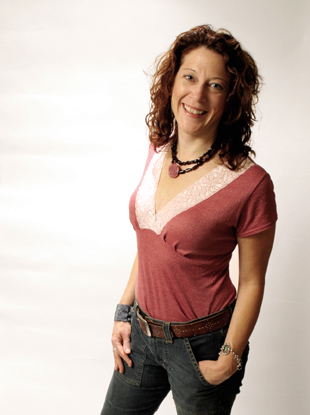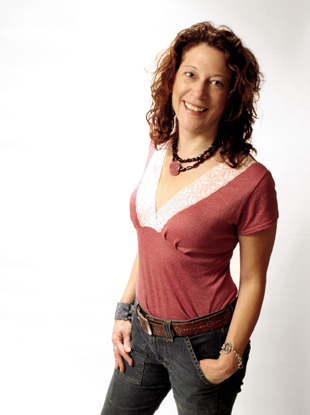Hack 72 Soften Facial Lines
| < Day Day Up > |
| You've taken great care to capture your subjects in the best light. But sometimes, artistic lighting accentuates facial lines. Here's how to soften them for a more natural look . I know from experience that the best light for photographing people comes from the front. [Hack #43] discussed this technique in detail, and it's a lighting rule I follow most of the timebut not always. Sometimes, I like the effect of illuminating from the side. Certain models have a personality that is better expressed by more dynamic lighting. The downside is that illumination from a side angle enhances texture. This byproduct doesn't thrill models when facial lines that weren't there before now appear. So, how do I get my dynamic lighting and satisfy the model too? I could spend more time and money on equipment to produce just the right effect. But I'm cheap and like to work quickly. So I go with my instincts while shooting and use a little Photoshop magic afterward. For example, I used only two lights to shoot the portrait in Figure 6-21: one from the front and a hair light from the top. We worked quickly and finished the entire session in less than 45 minutes. By shooting at this pace, the model stayed fresh and brought plenty of energy to the camera. If I had spent a lot of time fiddling with the equipment, I might have lost her interest. Figure 6-21. A two-light portrait I really like this shot, but the side lighting does the model injustice by accentuating facial lines. She doesn't look like that in real life. Normally, you don't see the smile lines on both sides of her mouth, but my lighting has created that effect. Fortunately, this is an easy fix in Photoshop CS. I can use the Healing Brush to eliminate the lines and then apply the Fade control to make my fix look natural. Here's how it works:
After applying this procedure to a few areas of the face, I was able to restore the model to her natural beauty, as shown in Figure 6-22, before I subjected her to my harsh photographic lighting. Figure 6-22. After applying Healing Brush with Fade control If the model's teeth need a little brightening, use the technique described in [Hack #70] . The key to all these adjustments is restraint . You don't want to change the subject's appearance. Instead, you're trying to compensate for the ill effects produced by photographic lighting. All of us like to see ourselves in a favorable light. By using good photographic technique and a little Photoshop magic, we can give that gift to friends , family, and clients . |
| < Day Day Up > |
EAN: 2147483647
Pages: 161
 Undo Healing Brush and try again. You might want to reposition your sampling area by Option-clicking on another part of the face. After a few tries , you'll get results that come close. And close is all you need, because the final step is the true magic of this hack.
Undo Healing Brush and try again. You might want to reposition your sampling area by Option-clicking on another part of the face. After a few tries , you'll get results that come close. And close is all you need, because the final step is the true magic of this hack.